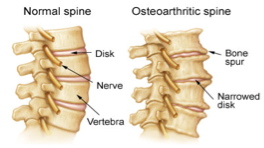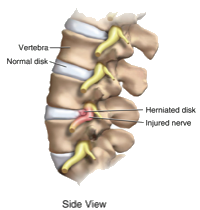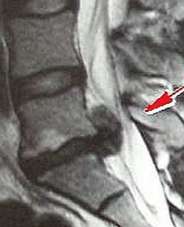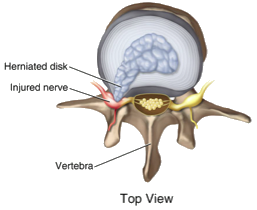Disk Disease, Herniated Disk and Sciatica
Anatomy:
Disks (discs) are connective tissue structures that rest in between the bones (vertebrae) in the spine. They absorb shock and allow the spine to move in multiple directions. The outside is made up of strong cartilage rings (like an onion) called the annulus fibrosis. The center of the disk is soft, like toothpaste, called the nucleus pulposus. The disk is commonly described to be similar to a jelly doughnut.

Disk problems:
Degenerative Disk Disease: This is a thinning or narrowing of the disk material. It can be seen on x-ray because the bones are closer together. It occurs with aging, but also with excessive pressure on the disks over a period of time. It is irreversible, but specific exercises can help reduce the pressure on the disks to work toward preventing further damage.
Herniated/Bulging/Protruded Disk: Everyone gets nervous about these problems, however- the research shows that they have the highest rate of improvement with conservative care. MRI is needed to confirm diagnosis of a herniated disk.
This occurs when the soft part of the disk is squished through the layers of the outer fibers and pressing toward the nerves. This may cause numbness, tingling, burning and pain in the back or neck and down the legs or arms (usually only on one side). If the pressure on the nerve is severe, it can cause weakness.
Sciatica is a term that describes any pain radiating down the legs. This may be caused by various problems, including disks.
It has been shown on MRI that disk herniations usually improve (75-80% of the time) with conservative treatment, sometimes completely!

Extruded/Sequestered Disk: This occurs when a piece of the disk extends into the space around the nerves or spine. It can break free and move around. This sometimes causes symptoms that move from side to side or different parts of the arms or legs.



Recent Comments